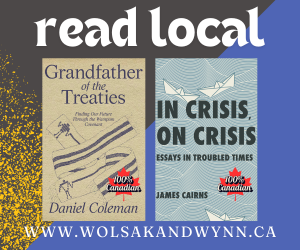Canada is facing a new economic era

Our country is at a turning point, and Hamilton could be a big winner – if we believe and prepare.
Not even the most jaded observer could have predicted just how quickly the political situation would deteriorate in the United States after the election of Donald Trump to a second term.
Between threatening the sovereignty of U.S. allies, levying tariffs chaotically, lawlessly gutting federal agencies and violating the due process rights of non-citizens, the U.S. has become a manifestly unreliable trading partner and an increasingly dangerous place to do business.
Notwithstanding Trump’s repeated threatening insistence that Canada submit to becoming an American state, Canadians remain overwhelmingly opposed to giving up our sovereignty. At least for now, it remains highly unlikely that tanks will roll across the border and seize the country by force.
But no matter how the world’s dumbest trade war plays out, one thing seems absolutely clear: the era of cozy economic integration with the United States is over. We simply can’t count on Trump – or some future administration – to honour its trade agreements with Canada.
Canada has no choice but to chart a bold new course in economic development that weans us off the easy, alluring path of allowing Canada’s economy to be shaped primarily by the interests of American manufacturing enterprises.
During the long industrial boom following the Second World War, Canada gradually settled into a continental model of economic integration in which supply chains flow primarily north-south instead of east-west.
The 1965 Auto Pact eliminated automobile tariffs for the Big Three U.S. automakers and guaranteed baseline levels of Canadian manufacturing, but at the cost of locking in the branch plant model in which Canada retained auto manufacturing jobs (at least in southern Ontario) while research, development and investment decisions resided in American corporate head offices.
The Free Trade Agreement in 1988 and then NAFTA in 1992 further cemented the north-south orientation of continental supply chains by expanding the market in export-based industries – particularly fossil fuels and other extractive resources – while trading away previous guarantees of Canadian manufacturing jobs.
Today, our economy is highly integrated along complex cross-border supply lines that involve high levels of direct American investment. That was meant to provide economic security, but it also leaves Canada uniquely vulnerable to the capricious whims of the Mad King on the Potomac.
Tempting as it might be to turn inward and raise the drawbridge against the world, that is a direct path to national stagnation and impoverishment. Instead, we need to embrace a truly global industrial trading strategy in which Canada gets much better at transforming its own mineral resources and human capital into high-quality goods that compete on the world stage.
For an old, economically languishing industrial city like Hamilton, that represents an extraordinary opportunity for economic revitalization.
But to take advantage of this transformation, we need to get prepared to leverage our strengths and shore up our weaknesses so we can play an important role in connecting Canada with the global economy.
With its deep-water port connecting to the Atlantic Ocean and an extensive rail network, Hamilton is already poised to be a hub for both expanded domestic production and international trade that takes advantage of Canada’s trade agreements with Europe and Asia and emerging markets in Latin America and Africa.
Canada has extensive supplies of the rare earth minerals needed to supply the next generation of electric battery technologies. There’s no reason we can’t manufacture batteries in Canada, and more specifically right here in Hamilton.
Likewise, to meet the increasing global demand for lower-emissions materials, particularly the emissions standards in European markets, we need to modernize our steelmaking by accelerating the shift to electric arc furnace technology.
McMaster researchers have developed an aerosol COVID vaccine that can be taken nasally instead of injected, and they just started Phase 2 human trials. With a more well-developed life sciences sector, we could be manufacturing such next-generation vaccines right here in Hamilton.
We have a world-class research university, a dynamic community college, a still-nascent but slowly growing innovation district that includes an advanced materials laboratory, and a surfeit of industrial land.
Instead of operating in silos, we need to bring these parties together to work on a strategic plan that combines applied research, clean steel, next-generation manufacturing, supply chain resilience, clean energy and electrification, life sciences technology, advanced skills training and modern logistics to drive a real renaissance in Hamilton’s industrial economy.
The federal and provincial governments will need to manage diplomacy and national strategy, but we also need visionary, passionate leadership at the local level to seize the moment. To put it bluntly, we need to do better than the same old myopic and parochial mindset that seems to permeate City Hall.
For example, such a transformation of the city’s economy cannot succeed unless Hamilton also successfully tackles the housing crisis by dramatically increasing the supply and variety of housing. Among other measures, that will require bold and even radical reform of municipal zoning regulations to allow high-quality, mixed-use density to flourish across the city.
And yes, while we’re at it, we also need a visionary transit strategy that treats high-quality local transit as a priority, directs meaningful investments into growing our transit system and integrates local and regional transit to facilitate the increased movement of people that an economic renaissance will produce.
In short, we need municipal leaders who: (a) believe transformation is both necessary and possible; (b) have a genuine sense of urgency to break through the inertia and drive the change we need; (c) are prepared to think strategically and align our various municipal policies and budgetary investments toward this goal; and (d) are able to resist the urge to fall into the small, petty politics of resentment, division and can’t-do fatalism that have held us back for too long.












